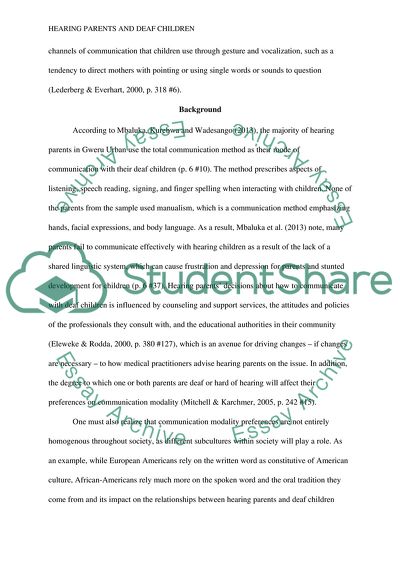Cite this document
(Communication between Hearing Parents and Their Deaf Children in Saudi Research Proposal Example | Topics and Well Written Essays - 3250 words, n.d.)
Communication between Hearing Parents and Their Deaf Children in Saudi Research Proposal Example | Topics and Well Written Essays - 3250 words. https://studentshare.org/psychology/1862726-proposal
Communication between Hearing Parents and Their Deaf Children in Saudi Research Proposal Example | Topics and Well Written Essays - 3250 words. https://studentshare.org/psychology/1862726-proposal
(Communication Between Hearing Parents and Their Deaf Children in Saudi Research Proposal Example | Topics and Well Written Essays - 3250 Words)
Communication Between Hearing Parents and Their Deaf Children in Saudi Research Proposal Example | Topics and Well Written Essays - 3250 Words. https://studentshare.org/psychology/1862726-proposal.
Communication Between Hearing Parents and Their Deaf Children in Saudi Research Proposal Example | Topics and Well Written Essays - 3250 Words. https://studentshare.org/psychology/1862726-proposal.
“Communication Between Hearing Parents and Their Deaf Children in Saudi Research Proposal Example | Topics and Well Written Essays - 3250 Words”. https://studentshare.org/psychology/1862726-proposal.


